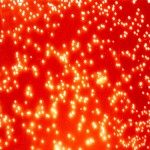Link to Pubmed [PMID] – 26318191
J. Antimicrob. Chemother. 2015 Dec;70(12):3230-7
OBJECTIVES: The objective of this study was to examine Klebsiella oxytoca clonal and phylogenetic diversity, based on an international collection of carriage isolates non-susceptible to expanded-spectrum cephalosporins (ESCs).
METHODS: The study material comprised 68 rectal carriage K. oxytoca isolates non-susceptible to ESCs recovered in 2008-11 from patients in 14 hospitals across Europe and Israel. ESC resistance was tested phenotypically; genes encoding ESBLs, AmpC cephalosporinases and carbapenemases were amplified and sequenced. The isolates were typed by PFGE and MLST, followed by sequencing of blaOXY genes.
RESULTS: MLST and PFGE distinguished 34 STs and 47 pulsotypes among the isolates, respectively. Six STs were split into several pulsotypes each. Five STs were more prevalent (n = 2-9) and occurred in several countries each, including ST2, ST9 and ST141, which belong to a growing international clonal complex (CC), CC2. Four phylogenetic lineages were distinguished, each with another type of chromosomal OXY-type β-lactamase. Three of these, with OXY-1/-5, OXY-2 types and OXY-4, corresponded to previously described phylogroups KoI, KoII and KoIV, respectively. A single isolate from Israel represented a distinct lineage with a newly defined OXY-7 type. The phylogroups showed interesting differences in mechanisms of ESC resistance; KoI strains rarely overexpressed the OXY enzymes but commonly produced ESBLs, whereas KoII strains often were OXY hyperproducers and carried ESBLs much less frequently. AmpCs (DHA-1) and carbapenemases (VIM-1) occurred sporadically.
CONCLUSIONS: The study confirmed the high genetic diversity of the collection of K. oxytoca ESC-non-susceptible isolates, composed of phylogroups with distinct types of OXY-type β-lactamases, and revealed some STs of broad geographical distribution.


